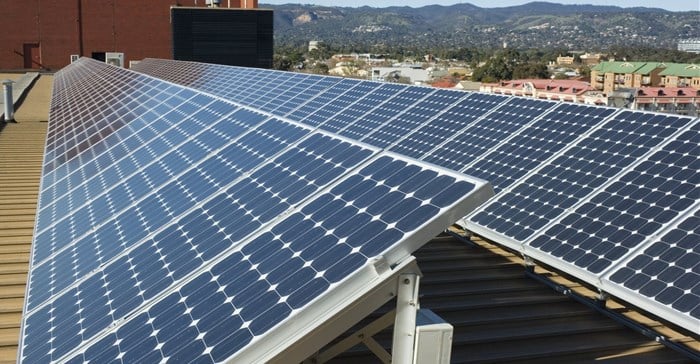
Locally; South Africa’s energy history is firmly embedded in a monopolistic framework and we have been slower than some to follow the global trends. Despite an obvious escalation by government to tackle issues around energy regulations to allow for more flexibility, we are still in an awkward in-between phase that is rife with uncertainty.
Recent announcements have made it clear that President Cyril Ramaphosa sees the deregulation of private sector power generation and the ramping up of licenced independent power producers (IPPs) as crucial to South Africa’s energy security. Eskom still supplies more than 90% of the country’s electricity. Yet at the recent Business Unity South Africa Indaba, the organisation's president, Sipho Pityana said that the government has been reluctant to take the hard decision required to reform Eskom and that these failures have put us into an ‘unprecedented crisis’. Time will tell if the government’s renewed focus on finding quick, stable solutions will yield results.
It’s not all doom and gloom though. There are options available to all of us. Especially when one explores the role that renewables can play.
Changes to the sector are posing a challenge to municipalities that have traditionally earned a significant portion of their revenue from energy. This is one of the reasons the industry is so carefully regulated. With the growing trend of consumers and industry wanting to generate their own power, if local government does not adequately prepare they are going to be left behind. But this can be seen as both an opportunity and a risk.
Simply put, municipalities buy their energy in bulk, at bulk rates, from Eskom. They then sell this power on to commercial, industrial and residential customers at a higher price. The Eskom rate and the municipality surcharge are both regulated by the National Energy Regulator of South Africa (Nersa) However, independent studies have shown that there is little price consistency between municipalities.
The market is also fragmented (58% of consumers buy directly from Eskom while 42% buy from municipalities), and the municipalities themselves differ widely in terms of their size, capacity and resources. So the question becomes: how can distribution utilities (municipalities) successfully and sustainably introduce alternative solutions into their systems, policies and financial models, while ensuring they can provide electricity to everyone?
SSEGs are located at residential, commercial or industrial sites and the power generated is consumed by them. More often than not these are solar photovoltaic (PV) systems, but they can also be technologies related to wind and biogas.
While the South African government acknowledges that SSEGs are an important part of the solution, SSEG Programmes are not yet getting enough support from municipalities in order for the necessary scale to take place. This might change in the near future but for now the systems are not condusive to worthwhile solutions.
Nersa has drafted rules which will require all SSEGs to be registered with it via the local supply authority (Eskom or Minicipality). In turn, the supply authorities have the opportunity to regulate and enable SSEGs within their supply areas, through, for example, smart grids that allow the sale of electricity from the SSEG back to the supply authority or to other consumers directly.
SSEG programmes are not commonplace yet because of the lack of support and because they are driven by consumer demand. There is also inconsistent roll out. Currently every province in South Africa has at least one municipality that supports SSEGs. However, Gauteng, for example, has SSEG programmes at all the major municipalities but in KwaZulu-Natal, eThekwinini is the province’s only SSEG friendly municipality. Further, no SSEG programme currently enables the sale of electricity from an SSEG to a third party via the municipal grid.
One of the challenges that SSEGs are facing is the massive difference in the rates. Cape Town charges a meter change fee of between R10,000 and R15,000 which is a once off amount. The city also has a feed-in tariff of 74c per kilowatt hour which is pretty good. In comparison, the City of Tshwane charges a fixed monthly charge of R181,20c per month but their feed-in tariff is 10c per kilowatt hour, which is really low.
To mitigate the impact of load shedding (and reduce our emissions), we have to be able to respond to the large increase in demand for alternative, clean energy. Our challenge is to find stable, long-term solutions that are not seen as a lost revenue risk (because the reality is, municipalities have to earn off of energy sales in order to function).
Municipalities need to shift their revenue base to rely less on Eskom energy sales and focus more on income from SSEG fixed charges and grid operator services. This will do two important things – it will give them a fixed annuity income to offset and it will move them towards preparing for the inevitable that sees renewables as a significant portion of the mix.
This will help them avoid what is commonly known as ‘the utility death spiral’ where higher income households that can afford to, leave the grid for cleaner, more stable options. On the grid the higher income users have traditionally subsided the lower income users who are not able to pay the massive tariff increases. This means a shrinking high income base. And as more tariff increases happen, more people move off the grid, creating a death spiral that results in bankrupted municipalities that are unable to meet their service obligations.
We are seeing massive shifts globally towards consumers generating their own power through clean, reliable sources and there is no way the same won’t happen in South Africa. The national and local governments are simply going to have to become better equipped to deal with it in order to future proof themselves.